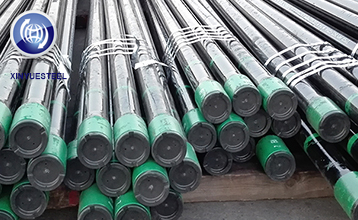It is difficult to make a big breakthrough in the off season of steel market
Jul. 05, 2021
After the Dragon Boat Festival, the operation of the steel market appears fatigue. The futures price of rebar once fell below 5000 yuan / ton, and the hot coil futures price fell back to 5200 yuan / ton; Spot prices also went down, with the biggest one-day drop of 100 yuan / ton. Overall, the momentum of steel price rise is insufficient. The author thinks that under the influence of macro "cooling" pressure and demand reduction in off-season, it is difficult for the steel market to make a big breakthrough.
First of all, according to the latest economic data released in May, a number of data closely related to steel demand did not perform as expected, which exacerbated the pessimism of market participants on the future market. Take the real estate industry as an example. According to the data of the National Bureau of statistics, the sales area of real estate nationwide reached 161 million square meters in May, with a year-on-year growth of 9.2%, and the growth rate decreased by 10 percentage points month on month, 14.2% higher than the average in the same period of 2019 and 2020; The amount of investment in real estate development in China reached 1.41 trillion yuan, a year-on-year increase of 9.8% and a month on month decrease of 3.8 percentage points, an increase of 14.1% compared with the average in the same period of 2019 and 2020; The newly started area of real estate in China has reached 204 million square meters, 4.9% lower than the average in the same period of 2019 and 2020. As a key steel field, the investment growth of the real estate industry is less than expected, and the pulling effect on "steel demand" is weakened, so the steel price lacks effective demand support.

Secondly, the two national departments recently launched a joint survey on the regulation and supervision of commodity prices, and said that they would closely monitor the price trend of coal and other commodities, earnestly do a good job in price forecasting and early warning, timely understand the operation of relevant market entities, investigate abnormal transactions and malicious speculation, and severely crack down on illegal activities such as hoarding and driving up prices, Maintain normal market order. In short, the macro policy still maintains a "cooling" attitude towards the phenomenon of steel price overheating. Affected by this, the market speculation has been greatly reduced, which is conducive to the stable operation of the steel market in the off-season.
Finally, it is difficult for market fundamentals to provide strong support for steel price breakthrough.
From the demand side, the current market demand has begun to weaken. From the perspective of excavators known as the economic wind vane, the sales volume of excavators nationwide in May reached 27220 units, a year-on-year decrease of 14.3%, among which the sales volume of domestic market reached 22070 units, a year-on-year decrease of 25.2%. Weak demand can also be seen from the inflection point of steel inventory. As of June 19, the total inventory of five major types of steel products in China has reached 20.5398 million tons, an increase of 665600 tons per week. Among them, the steel plant inventory reached 6.313 million tons, with a week to month increase of 266400 tons; Social inventory reached 14.2376 million tons, an increase of 3992 million tons per week.
From the supply side, in the first ten days of June, the average daily output of crude steel of key steel enterprises in China reached 2.3353 million tons, a month on month increase of 2.15%; The average daily output of steel reached 2.212 million tons, which was down on a month on month basis, but increased by 16.07% on a year-on-year basis. Overall, the supply of market resources is at a high level. In the pattern of "strong supply and weak demand", it is difficult for steel prices to rebound sharply.
Based on the above reasons, the author believes that the steel price will continue to adjust in the short term. However, considering that the price of raw materials and fuels is better than that of finished products, supported by the cost side, it is unlikely that the steel price will fall sharply in the short term, and more will continue the shock adjustment of "top and bottom".



